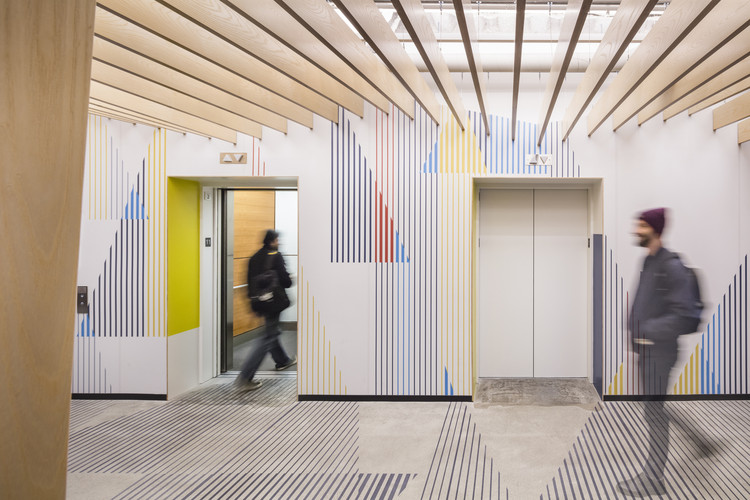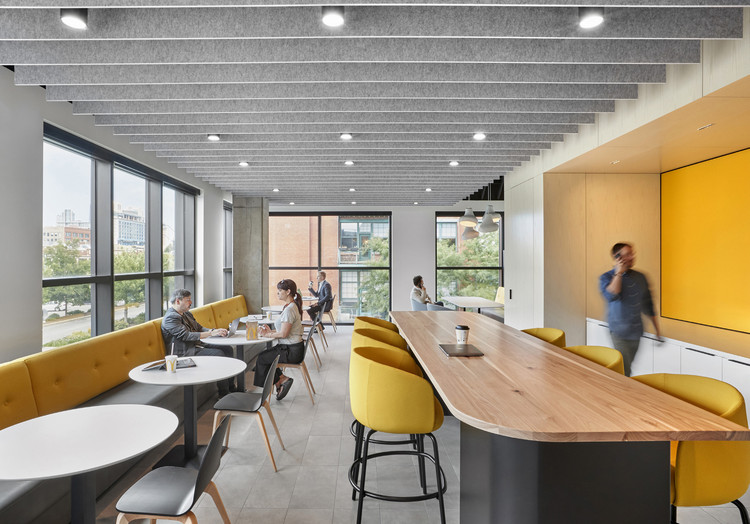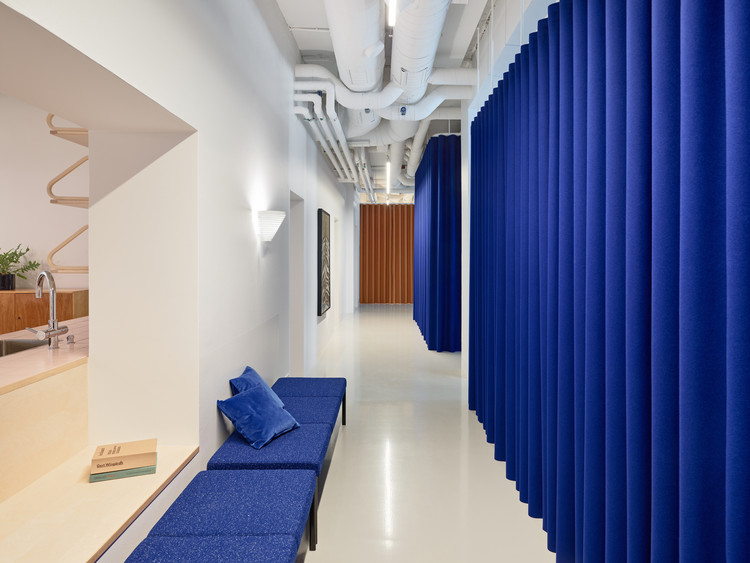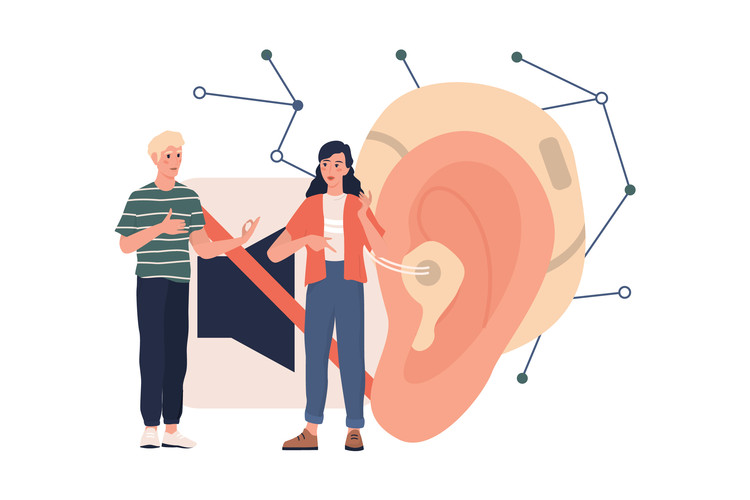Contrary to what we might believe, hearing loss is not always congenital, but could sooner or later happen to any of us. According to the WHO, almost a third of people over 65 suffer from debilitating hearing loss. Yet from a certain perspective, hearing loss could be considered more of a ‘difference’ than a ‘disability’. Although the spatial demands of people with hearing disabilities are not as noticeable as spaces for the blind or for those who experience reduced mobility, the reduction of hearing capacity does entail a particular way of experiencing the environment. Is it possible to enhance this experience through interior design?
According to the World Health Organization, around 5% of the world population – approximately 466 million people – is diagnosed with what they call ‘disabling hearing loss’. Although this statistic is divided into different degrees of hearing incapacity, partial or total (hearing loss or anacusis), the overall percentage is characterized by hearing loss greater than 40dB for adults and greater than 30dB for children, with the majority of people suffering from this disability concentrated in low and middle-income countries.
How to design inclusively
Obviously, the first issue to take into account are the differences that separate programs require: designing the interior of a house and the interior of a hospital are not the same, regardless of the impediments of its users. The relationships, dimensions, and movements within each space are different, as well as the volume and purpose of sounds. However, there are several general considerations to take into account to design more acoustically comfortable spaces.
Interior layout and visibility
Hearing-impaired people use different methods to communicate, incorporating written language, assistive devices, sign language, or speaking orally in some cases. According to the Americans With Disabilities Act, on average, only a third of spoken words can be understood by speech reading (or lip reading). Thus, it is key to create spatial conditions for effective communication through these other listed methods, implying that interlocutors must always be able to face each other comfortably without having to stop looking at each other while talking.

Considering wide or circular rather than linear distributions for spaces of more than 4 people can facilitate an open communication channel where all participants can see each other. Divisions and mobile furniture can help organize rooms with these characteristics. In terms of mobility, it is important to generate routes that allow people to look at each other while walking and still cross the space safely. Ramps, automatic doors, graphic security elements, and signage are equally useful in this case.
Brightness, light and reflections
For similar reasons, light plays a fundamental role in ensuring not only comfort, but in this case communication. Colors that contrast with skin tones help other people better perceive facial expressions and hand movements. Natural or artificial lighting needs to be sufficient to ensure clear vision but avoid glare, and continuous to avoid sudden changes in the atmosphere that can be disturbing. Windows must regulate interior light, as well as glass and mirrors. Some specialists recommend the use of mirrors to maintain greater visual control of the environment, as long as they are well placed and do not contribute to confusion in understanding the space.

Multisensory spaces
They say that when a person loses a sense, others become more acute. Colors, shadows, and even vibrations can help people with hearing limitations better understand or be alert to their surroundings. In a highly visual culture, we tend to forget that the experience of space encompasses all the senses. Multisensory design, rooted in the 1950s, proposes an enjoyment of space that occurs through the senses, demonstrating that by opening up to multi-sensory experience it is possible to satisfy a wider range of users. Until now, tactics for multi-sensory design have been most heavily explored in art exhibitions and installations, though these examples demonstrate their potential to reach a broader audience in the field of architecture.

Acoustic optimization
Contrary to popular belief, noise – in addition to being a serious cause of hearing loss – is a critical factor in the well-being of people with low hearing levels. Regardless of grade, people with low hearing levels do perceive sound in ways that can be highly distracting, especially for individuals with assistive devices. Reverberation caused by sound waves and reflected by hard surfaces can be distracting and even painful for them. To improve these indoor conditions, following basic acoustic principles is sufficient. Improving the acoustics of indoor spaces consists mainly of reducing reverberation by recognizing the absorption level of surrounding materials, correctly distributing noise or sound sources such as machines or speakers, and considering an ambient noise gradient according to the use of each space.

Materials, objects, and new technologies
To achieve an inclusive design culture, it is important to think of simple solutions that do not heavily increase the project’s base cost, independent of the specific solutions that may exist in the market. These simple solutions can occur by considering the properties of absorbent and reflective materials to reduce the intensity of sound that travels from one space to another, or by considering the effect of materials in everyday use: avoid overly bright surfaces or materials in floors and furniture that usually cause noise on contact (such as when moving furniture) or transmit vibrations (such as floors of wood that reverberate when walking).

In addition to cladding materials, there are objects and technologies that, when taking everyday acts into account, can make a space feel more comfortable. In the city, we often communicate through noise – bells, doorbells, sirens – that interfere with everyone’s acoustic comfort. Considering visual signs such as light or digital alerts, or written communication through whiteboards or color codes, can serve as simple solutions for daily communication. There are also new technologies that can translate sound to images and vibrations for more complex experiences, or applications that recognize ambient sound (such as the washing machine) or translate alerts into colors.
In short, a truly inclusive design does not always necessitate hyperawareness of special considerations, but can simply mean incorporating needs that tend to be basic for everyone, regardless of their physical conditions. As we assume universal accessibility to always be an essential concept when designing spaces, we must likewise assume that not all impediments are equivalent and that different limitations face particular needs. Inclusion implies going far beyond specialized spaces and criteria (it is not true inclusion if it depends on the construction of specific places), but rather avoiding such segregation in favor of making our daily environment friendly to all people, regardless of their particular restrictions.
In addition to the WHO and previously linked articles, some of the references used for this article are:
- DeafSpace is a project of Gallaudet University in Washington, D.C., a liberal arts institution geared towards people with hearing problems.
- The experience of deaf people in the spheres of daily activities, a study by Carla Regina Marin y Maria Cecília Rafael de Góes
- The Journal of the Acoustical Society of America
- Multisensory experiences in the exhibition “The Senses: Design Beyond Vision”
Source: Architecture for People with Hearing Loss: 6 Design Tips | ArchDaily














